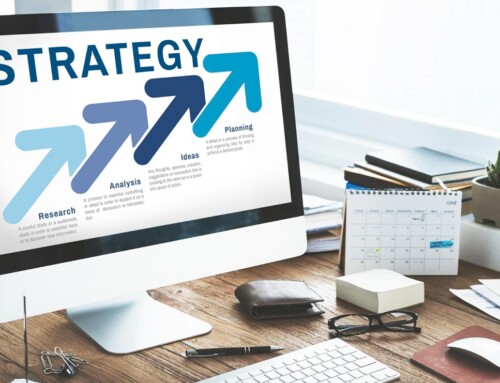Contents
Lots of businesses depend on making appointments to sell products and services. That’s especially true for small businesses that are trying to increase profits and grow. Ironically, it’s also one of the things that many small business owners find challenging. Running your business, dealing with existing customers, handling new leads, and booking new appointments can all add to a huge burden if not planned right. So, how to get more appointments without sinking too much of your time and resources? Here are all the answers you need to start.
Before we start getting to the part with the instructions, however, there is one thing that you need to consider. Are you going to get your appointments with cold calls or use cold emails? They are similar in many ways but they also have their differences. In the next section, I’ll explain both and show you how to get more appointments with both methods.
Cold Calls vs Cold Emails: Which Works Best?
Remember the annoying number of salespeople cold calling your place all the time when you were a kid? Well, I guess they still do that, but emails and other forms of marketing have made cold calling lose much of its appeal for marketers. The same, of course, is also true for cold emails, in a way. AI-based spam detectors and mailing services have gotten much better at filtering out unwanted emails since the heydays of cold emails. But not all hope is lost.
There are still many advantages to cold calling and cold email marketing and if you’re smart, you can make them work for you. Small business owners and entrepreneurs are actually in the best position to use this type of marketing method to book more appointments with potential customers. Of course, going on about cold calls and cold emails is not going to be easy, and you have to make sure you don’t strike the reader as an unwanted intrusion. You should definitely consider using the guide to writing effective cold emails that get a response.
Perhaps the most important difference between cold calls and cold marketing emails is in their level of personalization and how scalable they are. A cold call will feel more personal and needs to be backed by more personal research. Cold emails and marketing emails are much less unique, but you can use marketing tools like RunSensible to customize them in a way that feels personal. On the other hand, when your business is growing, making cold calls makes less sense, given how much time each call takes. An email marketing and sales tool like RunSensible, however, can send thousands of customized emails in a day, increasing the final number of conversions.
Cold emails are also less intrusive than cold phone calls. Prospects may respond more politely to your messages, even if you’re rejected. You can automate, track and forward them, making them more efficient.
6 Killer Ways of Getting More Appointments in 2022
Do Your Homework
Sure, it’s called cold calling/emailing but that doesn’t mean it has to be blind too. In some cases, you’ll even be using a list of leads you’ve generated yourself. However you’ve generated you leads and email list, you’ll need to leverage all the info you have to make the appointment happen. If you’re going with cold calling, this becomes a case-by-case task, where you’ll have to do some research on every lead you’re going to call up and ask for an appointment. With cold emails, however, you’ll be better off with list segmentation and email personalization.
Don’t Sell, Inform
If there is anything millennials hate in marketing, it’s pushy salespeople. Well, actually it’s not even a millennial thing, everyone hates to be put on the spot and pressured into buying something. But it seems millennials have even less room for accepting that kind of sales method, and since they’re the major consumers today, you’ll probably have to watch for that. The solution is pretty straightforward and actually in line with everything I’ve mentioned about marketing: you should try to bring value and information to your leads. Instead of putting convincing and selling as the main focus of everything you say or write, try to liste, inform, and add value to your potential customer. That will make them much more receptive to book an appointment and show up.
Be Assertive
This is where that whole salesmanship act comes in useful. Now, it may seem that this contradicts the previous point, but they actually fit together if you know what being confident and assertive mean in a sales conversation. When you’re a small business owner, you probably have to do the job of the salesperson yourself, and that means you need to ensure you know some of the basics. When you’re trying to talk or write to a lead to ask them for a sit down, it’s important to come off as confident in the value of your time and your company.
For example, take a look at these sentences, very common mistakes that actually reduce your chances of closing that appointment.
Conversation Do’s and Don’ts
Don’ts
“Thank you for taking the time from your busy schedule.”
“I’d really appreciate if you’d be kind enough to spare 5 minutes”
“I’m available wherever you are, so you just tell me when you want to meet”
Do’s
“I think I can schedule you for Tuesday 11:30. Does that work for you?”
“Does Wednesday work better for you or Monday?”
“You can use our online booking calendar to find an open session and make an appointment”
The impression your lead will get from these is that your product or service is not worth their time. Salespeople who use these kind of sentences will come across as needy, insincere, and insecure. As you can see, this has nothing to do with being informative and not pushy. It’s just about offering the right impression about your value with a confidence that your leads will feel.
Part of being assertive is to actually ask for the meeting at the end. This is just like including a CTA on your landing page or marketing email. When talking to your leads on the phone, make sure to finish the conversation by asking for the appointment. Use sentences like the ones above to make the transition seem as natural as possible. Be careful not to sound way too pushy but be assertive and confident — assume that the appointment is a sure thing and just ask them to pick a date. That’s going to give you much better appointment numbers.
Follow It Up
If you’re seriously wondering how to get more appointments and if the strategies above aren’t enough, that’s because you’re not doing the follow-up right. Following up with the lead after you get them to agree to a meeting is one of the most effective ways of increasing your appointments. Don’t let the effect of your words fade as time goes by — use emails and reminders to keep your conversation alive in their mind.
Now, there are bad ways to follow up on an appointment and there are good ways. Consider the difference between a simple email reading something like: “Hey, just wanted to remind you we had a meeting,” and one including some extra info, maybe a meeting agenda, some pieces of content, an FAQ, as well as the actual reminder. Think of your appointments as an extra opportunity to impress by adding value. Of course, designing the follow-up reminders is also a great factor. If your use an Email Designer tool like the one included in RunSensible, you can easily add graphics and special content and CTA segments to punch up your reminders. It may even be a good idea to go with text messages instead of emails when it’s close to the appointment.
With a CRM and sales tool like RunSensible, you can set up automatic follow-up emails and text messages for each appointment you make. Check out this guide on using following up on appointments and how RunSensible can help you automate it. Or simply do it yourself without a 14-day free trial — no credit card required.
How the Get More Appointments the Easy Way
If you’ve read the guide this far, you’ll have noticed that some of these strategies for getting more appointments are hard without the proper set of tools. If you’re going to use cold emails and want them to actually work for you, you’ll need a way to customize them, let alone a valid mail server that can get you a high deliverability rate. It’s the same with following up on the appointments you’ve scheduled — without the right CRM and sales tool, you’ll actually end up more overwhelmed than before. So, following these steps is only part of the solution, incomplete without RunSensible. RunSensible is a complete small business solution that brings together all the essential CRM, sales, and marketing tools and lets you automate and manage all parts of your business for better results. With RunSensible, you can easily customize your cold emails, send appointment reminders to your leads, follow up on them automatically, and create online booking calendars that simplify scheduling.
Disclaimer: The content provided on this blog is for informational purposes only and does not constitute legal, financial, or professional advice.






